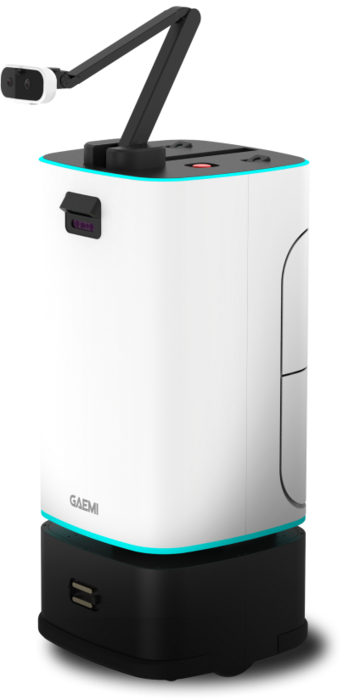ROBOTIS, launching next-generation autonomous robot with arms···“Entering mass production next year”
Posted by Lee Ho-gil on 15th Mar 2024
로보티즈, 팔 달린 차세대 자율주행로봇 출시“내년 대량생산 돌입” [Original Article]
Robotis has launched a next-generation autonomous robot that can move freely between floors using a robotic arm. It is a product aimed at the service market such as hotels and building management, and mass production will begin next year.
Kim Byung-soo, CEO of Robotis, said, “Next year, we plan to mass-produce the next-generation autonomous robots at a rate of several hundred units per quarter, and increase production to over 1,000 units by the end of the year,” adding, “We will be able to improve profitability as sales begin in earnest.”
The indoor autonomous robot presented by Robotis is a third-generation product that can operate an elevator and move between floors using a robot arm attached to the device. The robot that can move outdoors is the fourth generation.
Robots on the market can move between floors, but existing products require communication with the elevator. To establish a communication environment, the cost burden is high because the elevator hardware and parts must be replaced. The company explained that Robotis's product is efficient because the robot can press the elevator button directly. Robotis was the first to introduce a robot that can move between floors with a robot arm.
The use of robotic arms can also expand the scope of use, such as access to secure areas, because the cards are tagged with the robotic arm.
Robotis was founded as a company specializing in robot parts and software, and in 2018, it shifted its business structure to autonomous robots. Based on its own technology, the company reduced the price of autonomous robots with robot arms from the tens of millions of won to the millions of won level. Actuator technology, which is a robot drive device, is also Robotis’ differentiating capability.
CEO Kim said, “In the service sector, most autonomous robots are made in China,” and “We plan to expand the supply of robots in the business-to-business (B2B) market by emphasizing the inter-floor movement function that Chinese robots cannot do.”
Robotis is targeting high value-added areas such as hotels, hospitals, and building management. After dominating the market, the plan is to expand the lineup with low-priced products and broaden the base to include serving robots that can be used in restaurants.
The company also plans to sell its autonomous robots on a subscription basis. In order to expand consumer accessibility, the company will offer the product in a subscription-based lease format rather than an outright sale.
The improvement in the system that allows autonomous robots to move outdoors is also good news for Robotis. Since the revision of the Intelligent Robot Act went into effect on the 17th of last month, robots have been granted the legal status of pedestrians and are now able to walk on sidewalks.
CEO Kim said, “I think it is very meaningful in that it could usher in an era of full-fledged robot services,” and added, “We will expand our business so that outdoor robots can be used in areas such as food delivery and courier services.”



